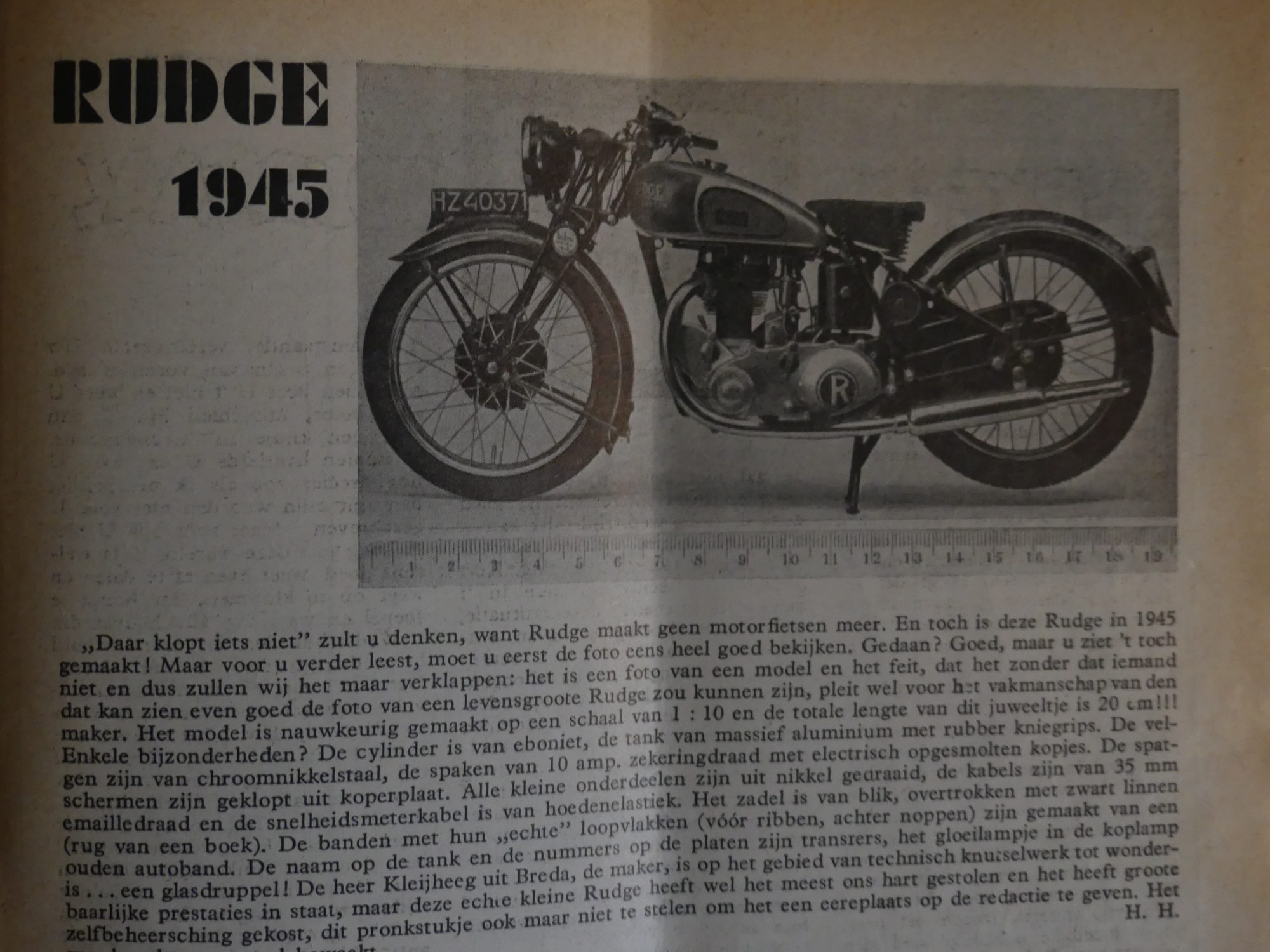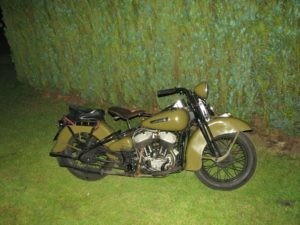Broadly speaking, our classics are the dreams of our childhood, distant relatives of our first cars or 'the cars of our fathers'. And because 'we' are about the same age as a whole, our classics are cars and motorcycles from the early 1950s to the early 1990s. Those are our classics, that is 'the trade'.
Classics from 1920
Then the discovery of Het Motor-Rijwiel and its treatment (with 19 images) from 1920 (and that was already the third edition) is a bit far from my bed show. By the way, it is number 39 from the Practische Bibiotheek and it cost ƒ 1,50.
The approach was clear at the time: A motorcycle is easy to steer, takes up little space and every experienced cyclist can ride such a machine immediately after explaining the operation of 'Ende various levers and levers'. And as a drive for the rear wheel? In 1920, the flat leather belt proved to be the best option. And the most powerful brake? Of course, it had to be in the rear wheel to prevent the front from slipping during braking. And of course, drum brakes like Wanderer and FN used were the best there was.
Classics from just after WWII
The motorcycles from just after WWII came closer for us in terms of greed: the British ex army machines and Harleys were already a big improvement after the bicycles without baths from the end of the war. And a Wehrmacht spanning? This was used as a tractor on the farm. And so you come to an 1946 collection folder of the weekly magazine Motor, free automobile and motorcycle weekly. In 1946, gasoline was still scarce and on the receipt. But everyone wanted it to go better and everyone was eager.
In terms of passenger car ownership, things have not progressed yet. But you already saw a lot of trucks and motorbikes. However, society was not yet completely flawless. The owner of a new side clapper quickly stopped because of the "jamming of the piston". That remained a recurring problem after cooling. The salesman came up with the excellent idea of 'seeing a single name', which caused the problem every time: There were no 'piston rings' fitted at the factory. Another buyer from another new motorcycle (from another reputable brand) noticed that his pride lacked a washer behind a crankshaft bearing.
The text in the weekly report states: Both cases, actually occurring at factories with a world reputation, show the truth of the saying that even the best horse sometimes stumbles. Fortunately that guarantee protects the owners from damage, which riders were delighted to find in the reported cases.
At the same time there was a discussion about the use of steering locks. The idea was that you could drive away thoughtlessly with the steering wheel locked. And indeed: you shouldn't think about that.
We were uninhibited then
And the fact that half motorcycling Netherlands walked out to see how a new 350 cc 3T (on the basis) was driven out of the building? After careful driving on the twin, the editors of Motor concluded that people who had experienced that happiness would be forever spoiled for ever driving a 'single-cylinder' because the Triumph twin gave its rider the same sensation as driving a 'smooth American car'.
But for the time being you had to have a purchase permit to be able to buy a motorcycle. And of course the administration of it went wrong so that many doctors, businessmen and workers in the reconstruction remained without transport for months. For example, a whole lot of new Indians and such 400 used motorcycles were waiting and waiting for the administration from the government to be done. We also see here that the government has not changed much since then.
There was a party in England Triumphs waiting for shipment
350 cc Ariels had arrived, and most of the freshly-matched Matchless 350 cc machines went to ... the railways. At Sparta in Apeldoorn, a whole line of motorcycles was already waiting for extradition.
And with all those motorcycles and administration, our current generation of classic enthusiasts started our passion. And that a new Harley-Davidson 750 cc side valve, once intended for our liberators, cost ƒ 300 in crate? That amount was so high for most Dutch motorists longing for motorized transport just after the war that it was only possible to dream about having something so phenomenal.








There were no 'new in the crate' HD 750, they were reconditioned engines.
Nevertheless, those must have been good times; with today's wallet into the time machine to 'buy in' ..
A person should not dream ?!
Never too old to dream! I just found a 1946 year of 'Motor'. Will the first of us who finds that time machine just call the other?